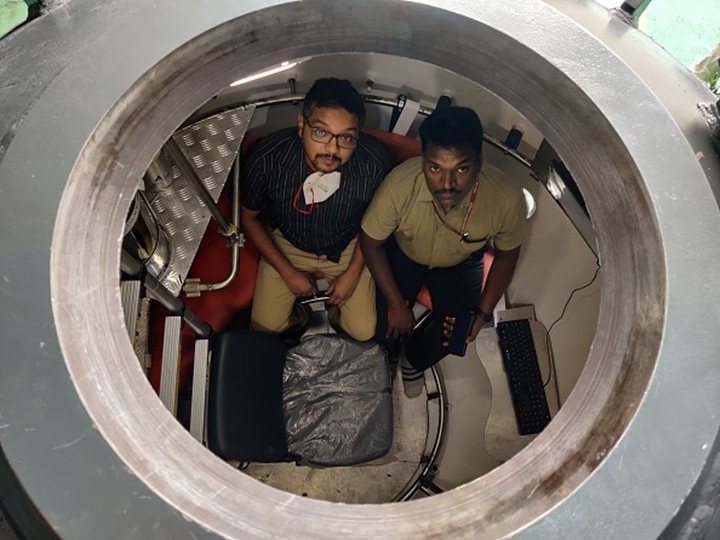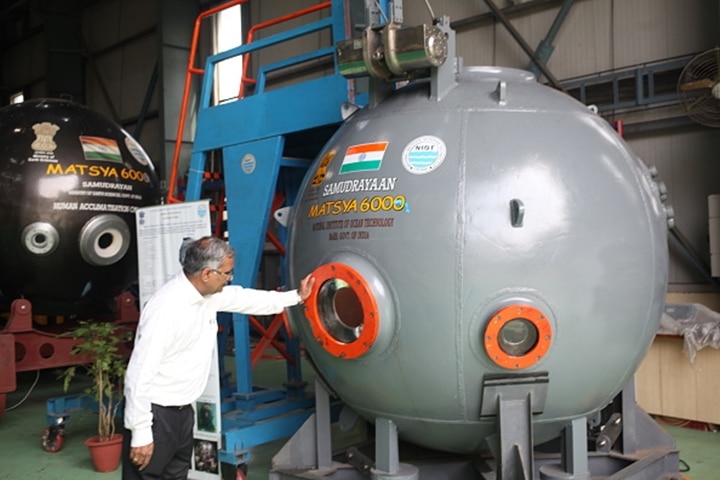Samudrayaan Mission: Revisited Submersible Specifications After Titan Disaster, Sea Trials Early 2024, Says NIOT Director
Samudrayaan mission: The National Institute of Ocean Technology has developed an indigenous submersible that will carry three persons to a depth of 6,000 meters to explore mineral resources.

The first sea trials for India's ambitious Samudrayaan mission, which aims to send a manned submersible to a depth of 6,000 metres, will be conducted in the first quarter of 2024. In an exclusive interview to ABP Live, Dr GA Ramadass, director of National Institute of Ocean Technology (NIOT), an autonomous institute under the Ministry of Earth Sciences, said three humans would be sent at a depth of 500 metres initially as part of the trials.
"The Samudrayaan mission is on track to be realised by 2026. We will start trials for 500-metre water depth in February or March 2024. The deep sea trials for 6,000 metres will start from 2025 last quarter," Dr Ramadass said.
For the mission, NIOT has developed an indigenous submersible, MATSYA-6000, which will carry three persons to a depth of 6,000 meters to explore deep ocean mineral resources rich in nickel, manganese, cobalt, and other rare earth elements.

The mission will propel India to an elite club of nations like the US, Russia, Japan, France, and China in developing manned vehicles to carry out sub-sea activities at such depths. The government has allocated a budget of Rs 4,077 crore for five years for the Deep Ocean Mission.
Amid concerns over deep-sea explorations following the Titan submersible disaster, in which five high-profile persons died on their way to explore the wreck of the Titanic, Dr Ramadass said they have revisited the specifications of the module after the incident.
"Any certified submersible will have precautions against what has happened. It is already addressed in the basic design, material selection, certification and testing. When all these four things are in place, there is very little chance of any disaster. But, we have revisited our specifications and once again verified that our things are safe, there is no doubt about it," the NIOT director said.
In June, the Titan, on its way to explore the Titanic wreckage that lies about 12,500 feet down, imploded, killing all five on board. The Titan was never certified or classed by marine organisations.
Certification And Safety Measures
Dr Ramadass asserted that the Matsya 6000 was being certified by the Norwegian certification agency, DNV (Det Norske Veritas), which has the experience of certifying submersibles up to 10,000 metre water depth.
"We have taken several safety measures. The hull or the sphere is made of titanium alloy. Structurally, it is the best design possible and the best material possible," he said.

The hull, the most important component of the submersible since it will face the maximum weight of water at 6,000 metres, has been tested 1.2 times beyond the intended depth.
"Every single component like electronics, emergency recovery systems has either double redundancy or triple redundancy. In this vehicle, floating is natural and going down takes an effort. After all this, the submersible will be tested beyond the intended operational depth. All precautions are in place," Dr Ramadass, an expert in deep sea technologies, added.
The total endurance of the submersible is 16 hours under normal operation and 96 hours in case of emergency for human safety.
"For 6,000 metres, the submersible will take four hours to go down and four hours to come back and four hours for undersea operations," Dr Ramadass said.
Communication System
For communication, the Matsya submersible will depend on an acoustic link with its surface vessel. There are also plans to keep the mother ship as close to the submersible as possible.
"We cannot have electromagnetic communication systems like those on space vehicles. It is ruled out in oceans. However, the acoustic communication system has its own limitations — very slow update and very small information exchange. It is not a complete replacement for terrestrial communication. But, even for that we have redundancy and we have plans to keep the mother ship as close to the submersible as possible," Dr Ramadass said.
Related Video
Uttarakhand News: Winter Chill Grips North India; Kedarnath Dham Covered in Snow






































